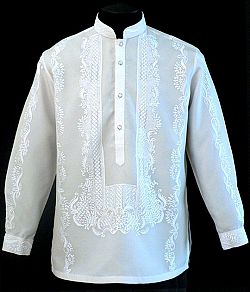Cultural traditions and customs add flair to weddings
SALT LAKE CITY— Marriage in the Catholic Church is the “covenant by which a man and a woman establish between themselves a partnership of the whole of life and which is ordered by its nature to the good of the spouses and the procreation and education of offspring,” and which “has been raised by Christ the Lord to the dignity of a sacrament between the baptized,” according to Canon Law 1055 §1.
While all marriages in the Church share this covenant, different cultures have different rites for the wedding ceremony itself.
The Catholic Diocese of Salt Lake City encompasses the entire state of Utah and is home to over 300,000 Catholics, 48 parishes, 19 missions and 16 Catholic schools. In every parish and mission, some of the wedding ceremony traditions are rooted in various ethnic cultures.
These rites and customs often hold a deep meaning to those who practice them.
For example, Vietnamese wedding traditions honor the couples’ ancestors at the ceremony. To seal their vows, the bride and groom exchange wedding rings. The groom also places earrings into the bride’s ears and he fastens a necklace around her neck.
A traditional Filipino custom is placing a cord and veil over the newlyweds, with the meaning that what God has joined no one can divide. Some Filipino women will wear a white traditional baro’t saya (embroidered airy blouse), while the men will wear a barong, a traditional dress shirt that is worn untucked. Another tradition is the giving of the arrhae to the bride. The arrhae are 13 coins that symbolize the wishes for wealth and prosperity in each month of the year, with an extra coin for additional blessings.
Hispanic families also bring numerous traditions to their wedding ceremonies and receptions.
A traditional Hispanic wedding involves a Mass in a Roman Catholic church. At the wedding ceremony there are also 13 coins, called arras, which pledge support and are a sign of trust. They also represent Christ and the 12 disciples.
To symbolize unity, an extra-long strand of rosary beads (the “lazo”) is placed in the shape of a figure eight around the necks of the marriage couple after they have exchanged their vows. This shows the union and protection of marriage.
A Latino wedding reception is family-oriented. Latin American countries have different traditions for the bridal couple’s first dance. For example, the guests may gather in a heart-shaped ring around the couple. The festivities may include salsa, merengue, mambo, flamenco and samba music for a Latin flare.
In Puerto Rico, a doll dressed in a replica of the bride’s gown is placed on the head table or on the cake table at the reception. Little mementos, called “capias,” inscribed with the couple’s names and the wedding date, are attached to the doll. During the reception, the bride and groom walk to each guest, pin a capia on him or her, and offer thanks for their presence at the wedding.
The money dance is traditional in both the Cuban and Filipino cultures, where each man who dances with the new bride pins money to her dress.
The Mexican wedding cake is usually a fruit cake that has been soaked in rum. Also served are “pastelitos de boda,” wedding cookies made of sugar and nuts.
A wedding is a real celebration, Pope Francis said to engaged couples in Rome on February 14, 2014.
In the Catholic Church, weddings are “a Christian celebration, not a worldly feast!” the Holy Father added. “What happened in Cana 2,000 years ago happens today at every wedding celebration: That which makes your wedding full and profoundly true will be the presence of the Lord who reveals himself and gives his grace. It is his presence that offers the ‘good wine;’ he is the secret to full joy, that which truly warms the heart.”
Exterior details like the banquet, the photographs, the clothes, the flowers “are important for a celebration, but only if they point to the real reason for your joy: the Lord’s blessing on your love,” Pope Francis said.
© Copyright 2025 The Diocese of Salt Lake City. All rights reserved.





Stay Connected With Us